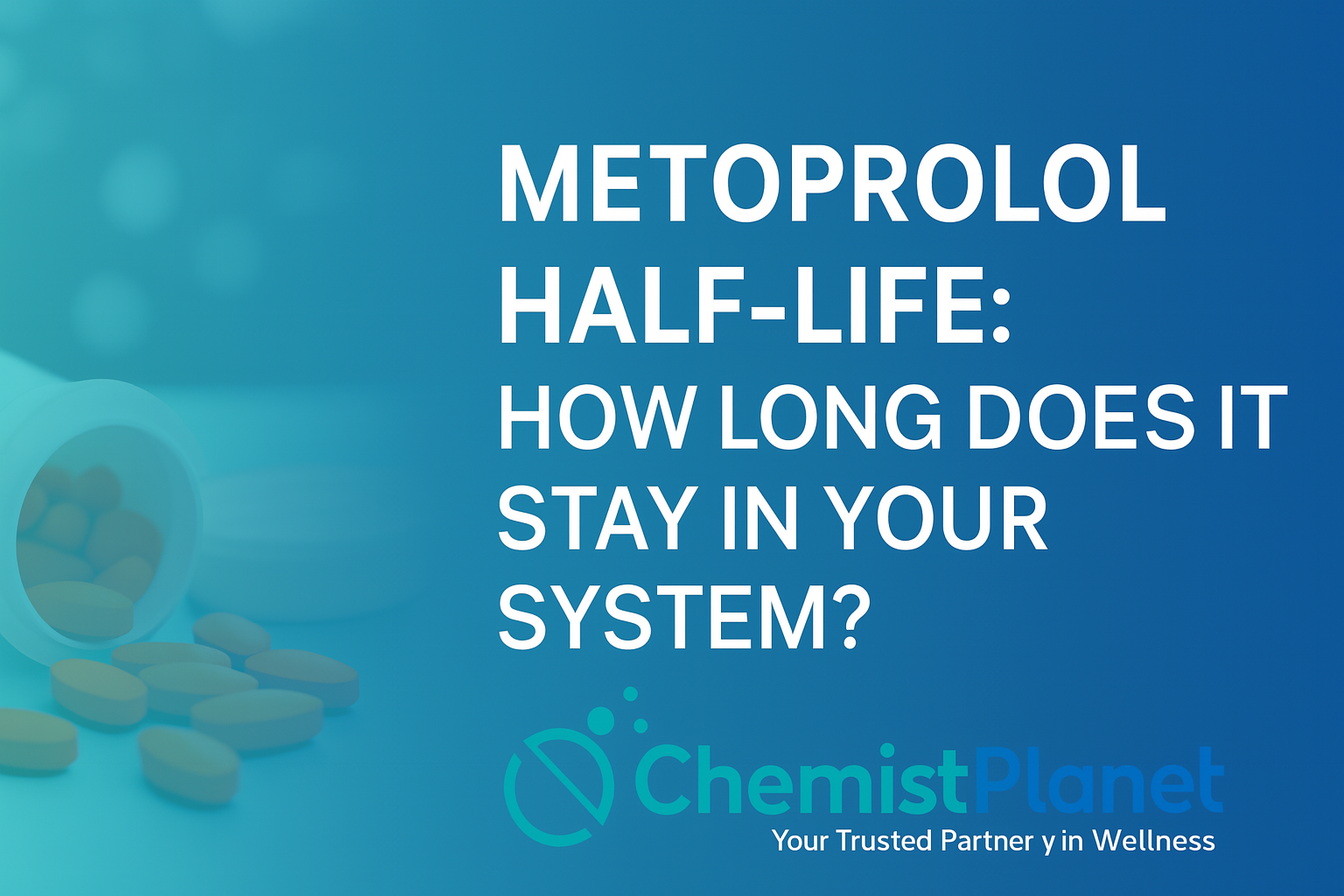
Metoprolol Half-Life: How Long Does It Stay in Your System?
High blood pressure, chest pain (angina), heart failure, and some heart rhythm disorders can all be treated with metoprolol, a beta-blocker that is often recommended. It helps to avoid heart attacks and other cardiovascular problems by decreasing the heart rate and so lightening the stress on the organ. Understanding how long any medication stays in the body is a crucial component of any medicine since it affects side effect control, dosage plans, and drug interactions. Regarding metoprolol, its half-life is quite important in deciding how long it stays active in your system.
What Is the Half-Life of Metoprolol?
The half-life of a drug is the amount of time it takes for half of the active substance to be eliminated from the bloodstream. For metoprolol, the average half-life is 3 to 7 hours, depending on the specific formulation and individual factors.
Metoprolol is available in two main forms: metoprolol tartrate (the immediate-release form) and metoprolol succinate (the extended-release form). The half-life of both forms is generally within the same range, but the release mechanism determines how long the drug has a therapeutic effect. For instance, metoprolol succinate is designed to release slowly over a 24-hour period, allowing for once-daily dosing, while metoprolol tartrate may need to be taken multiple times per day due to its shorter duration of action.
How Long Does Metoprolol Stay in Your System?
Though the half-life is between 3 and 7 hours, a drug usually takes 5 to 6 half-lives to be totally eliminated from the body. This suggests that following the last dose, metoprolol can remain in your system for 15 to 40 hours. But several things can affect this chronology, including kidney and liver function, age, body weight, metabolic rate, and other drugs being used.
Although the drug itself may be mostly gone within two days, depending on how your body reacts to it and how long you have been on it, other physiological effects—such as a reduced heart rate or blood pressure—may linger somewhat longer.
Factors That Affect Metoprolol Elimination
Medications are not all absorbed by everyone at the same pace. The liver enzyme CYP2D6 mostly handles metoprolol; variations in this enzyme can influence a person’s rate of clearance of the medication. Those with slower metabolism—that is, poor metabolizers—may have higher levels of metoprolol in their blood for longer periods, therefore raising their risk of side effects like bradycardia (a slower than normal heart rate), or tiredness and dizziness.
On the other hand, fast metabolizers may eliminate the medication more rapidly, therefore lowering its efficacy and maybe causing less regulation of blood pressure or heart rate.
Liver disease, age, and smoking status also affect how long metoprolol remains in the system since smoking accelerates drug clearance and increases liver enzyme activity.
Why Does Half-Life Matter?
Knowing the half-life of metoprolol helps patients and doctors decide when it is safe to begin or stop treatment and how often the drug should be taken. Stopping metoprolol abruptly, for instance, can cause rebound effects including elevated blood pressure or heart rate, so it’s usually tapered gradually under a doctor’s control.
Drug interactions also follow from the half-life. Should a new drug be developed that alters liver enzymes, it may either increase or decrease metoprolol levels in the bloodstream. Monitoring is therefore crucial whether one is adding or adjusting drugs.
What Happens After You Stop Taking Metoprolol?
Stopping metoprolol will cause it to progressively leave your system. Though some people may still feel its effects for a little longer, most of the medicine is eliminated in 1 to 2 days. Stopping the drug quickly, especially for those with heart disease, might be harmful though. In high-risk people, it could cause abnormal heart rate, chest discomfort, or perhaps a heart attack. Doctors so typically advise a progressive lowering of the dosage instead of sudden withdrawal.
See your healthcare practitioner first if side effects from metoprolol are causing you concern and you intend to quit. To help you avoid withdrawal symptoms, they could change the dosage, move you to another beta-blocker, or progressively cut the drug.
Conclusion
Depending on the dosage, formulation, and individual metabolism, metoprolol can remain in your system for up to 40 hours even if its half-life is roughly 3 to 7 hours. Whereas the immediate-release type calls for more frequent administration, the extended-release form lets one dose once daily. Managing your treatment plan, preventing interactions, and making sure a smooth transition should the medicine be discontinued or changed depend on knowing how long metoprolol stays in your body. See your doctor always before altering your prescription schedule.